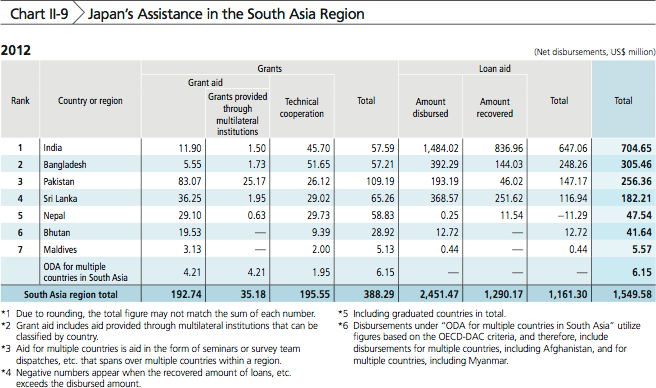Japan's Official Development Assistance White Paper 2013
2. South Asia
The South Asian region has an enormous economic potential, particularly in India, the world’s largest democracy, and has been increasing its presence in the international community. South Asia is strategically important to Japan because of its location on a sea lane that connects East Asia with the Middle East, and is also crucial in responding to the global environmental issues. In addition, the region is of great interest to Japan and the rest of the international community in regard to the role it plays in international efforts against terrorism and extremism.
At the same time, the South Asian region still faces many issues that must be addressed, including a severe lack of basic infrastructure such as roads, railroads, and ports, growing populations, low school enrollment ratios in primary education, inadequate water, sanitation, healthcare and medical facilities, insufficient maternal and child healthcare, a lack of countermeasures against infectious diseases, and the absence of the rule of law. The poverty reduction is a particularly challenging problem. Approximately 500 million people among 1.6 billion of the region’s population are said to be living in poverty, making it one of the world’s poorest regions. South Asia is the second most important region behind Africa in aiming to achieve the Millennium Development Goals (MDGs). (Note 4)
Japan provides assistance focusing on improving the socio-economic infrastructure in order to harness the economic potential of South Asia as well as to alleviate the growing gap between the rich and the poor.
<Japan’s Efforts>
In its relationship with India, a key player in South Asia, Japan promotes cooperation in a wide range of fields based on the “Strategic and Global Partnership.” These include economic cooperation on projects such as the Dedicated Freight Corridor (DFC), which is the core of the Delhi Mumbai Industrial Corridor (DMIC) as well as, politics and security, economy, and scholarly exchange. India is the largest recipient of Japan’s ODA loans, and Japan focuses on providing assistance for the development of economic infrastructure, mainly in the field of power and transport as well as social sector development such as the rural development aimed at poverty reduction in India.
In May 2009, the military conflict between government troops and the Liberation Tiger of Tamil Eelam (LTTE) that had lasted almost 26 years in Sri Lanka came to an end. Japan provides aid to promote peacebuilding and socio-economic development in Sri Lanka, while giving consideration to regional and ethnic balance, and the progression of national reconciliation.
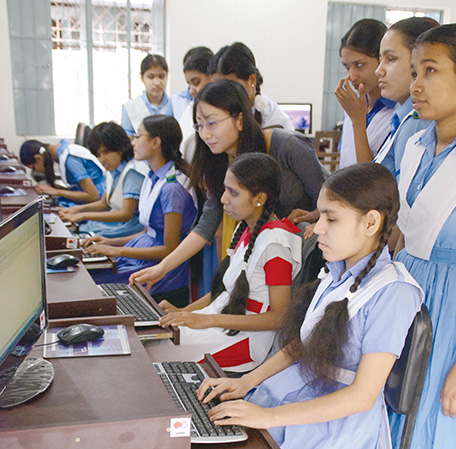
A Japanese embassy staff visiting visually disabled female students who are learning to use a computer with the aid of voice recognition software. (Photo: Embassy of Japan in Bangladesh)
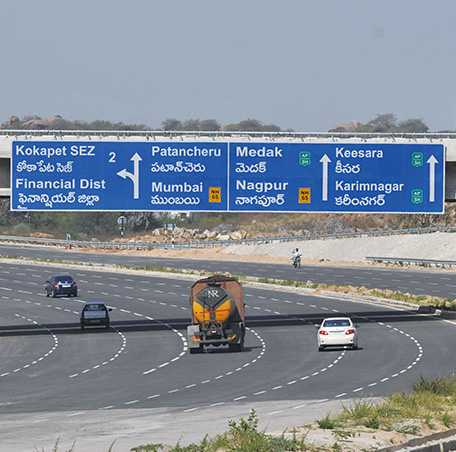
Hyderabad Outer Ring Road in India (Photo: Osamu Funao / JICA)
Pakistan plays an important role in international cooperation to combat terrorism. Japan supports stable growth of Pakistan by strengthening its socio-economic infrastructure. Some of Japan’s efforts include an assistance of up to $1 billion over two years pledged at the Pakistan Donors Conference hosted by Japan and the World Bank in April 2009 and the dispatch of the Japan Disaster Relief (JDR) team and the contribution of a total of $568 million in response to flood damage in 2010. In addition, when then-President Asif Ali Zardari visited Japan in February 2011, the Joint Statement on Japan-Pakistan Comprehensive Partnership was signed, and Japan agreed to continue providing support to enhance mutually beneficial economic and trade activities, to assist Pakistan in efforts to develop the power sector, water resources, and infrastructure, and to ensure human security.
Note 4: According to the 2013 MDGs Report, the percentage of people living on less than $1.25 per day was 30% (as of 2010), a figure only exceeded by Sub-Saharan Africa.
●India
Delhi Water Supply Improvement Project
Loan Aid (November 2012 - Ongoing)
In Delhi, the capital of India with a population of over 16.75 million people, the dilapidation of water supply infrastructure and insufficient maintenance and management have forced the city to restrict water supply to three hours on average per day. With rapid population growth due to economic development, it is feared that water shortages will continue to worsen.
In light of this situation, between 2009 and 2011, Japan provided supports for formulating a master plan that aims to realize 24-hour even distribution of water in Delhi by 2021. As part of the Delhi Water Supply Improvement Project for which Japan has been providing assistance since 2012, Japan has been working to renovate and improve water supply infrastructure (water purification plants and water mains) for areas prioritized in the master plan using ODA loans totaling approx. ¥29 billion.
Furthermore, as part of its support in non-infrastructure areas, Japan has been working to enhance water supply infrastructure data management using geographical information and to equip the city with the capacity to maintain and manage its water supply infrastructure by leveraging the expertise of Japanese local governments. It is expected that these projects will also benefit Japanese companies operating in Delhi as the Indian economy develops (167 companies as of October 2012).
(As of August 2013)
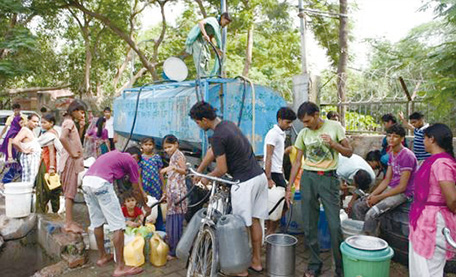
Delhi residents assembling around a water supply tank due to a water shortage (Photo: JICA)
●Pakistan
The Project for Expansion of Water Supply System in Faisalabad
Grant Aid (September 2010 - December 2012)
Urban areas in Pakistan have not been able to develop their water supply and sewerage facilities quickly enough to keep up with the population influx. The city of Faisalabad in Punjab, the third largest city in Pakistan, is not an exception, with only 50% of residents having access to the water supply system. Some residents use private wells in order to cope with the chronic water shortages. However, due to inappropriate maintenance and management of these wells, many people are becoming infected with hepatitis, diarrhea, typhoid and other waterborne diseases.
In light of this, Japan provided support for the drilling of deeper wells and the construction of pumping stations through the provision of Grant Aid (¥799 million) to improve the city’s water supply and sanitation. Through this cooperation, it is expected that the city’s daily water supply volume will increase by 91,000 ㎥. This means that water supply will increase by 30% and more than 65% of the residents will have access to water.
It is expected that as the supply of safe water increases, the risk of waterborne disease infection will decrease and the city’s sanitation will improve.
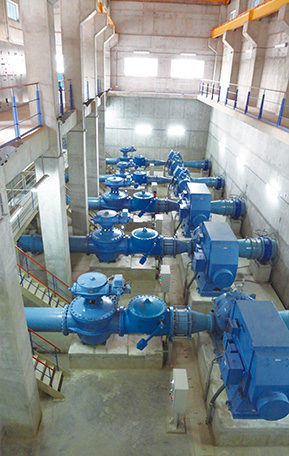
Water supply pumps which were installed with Grant Aid (Photo: JICA)

